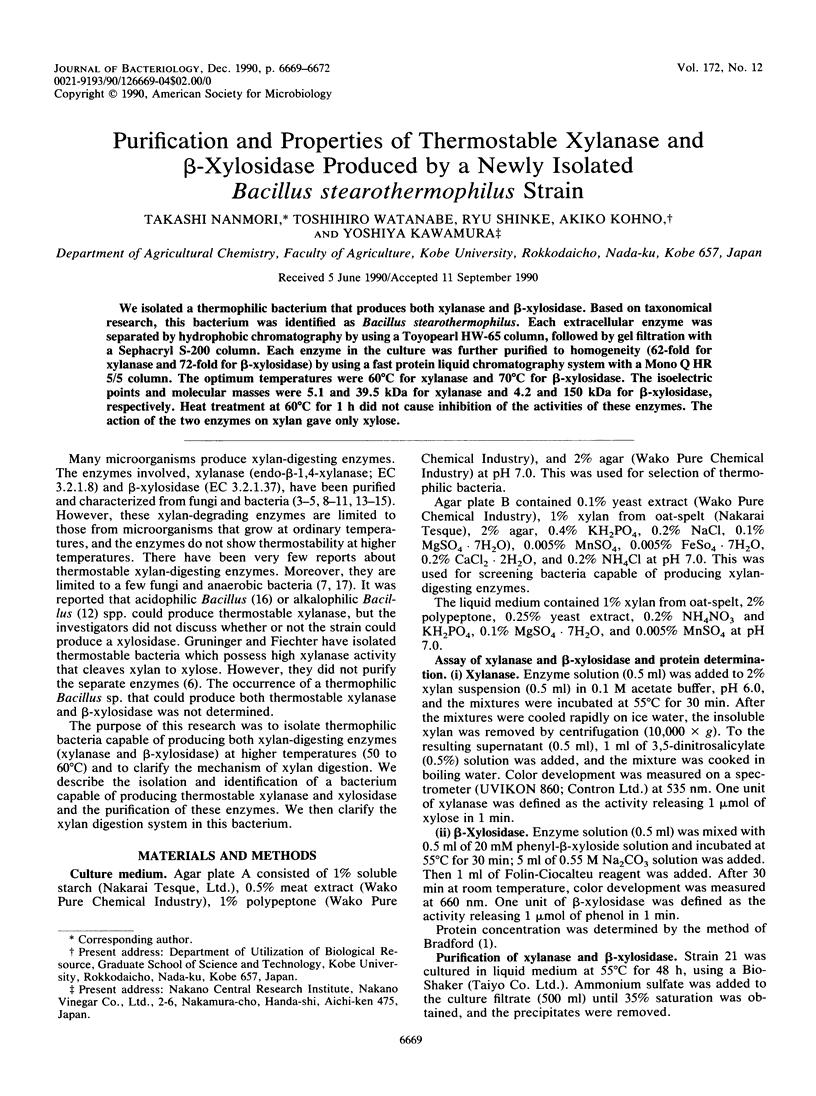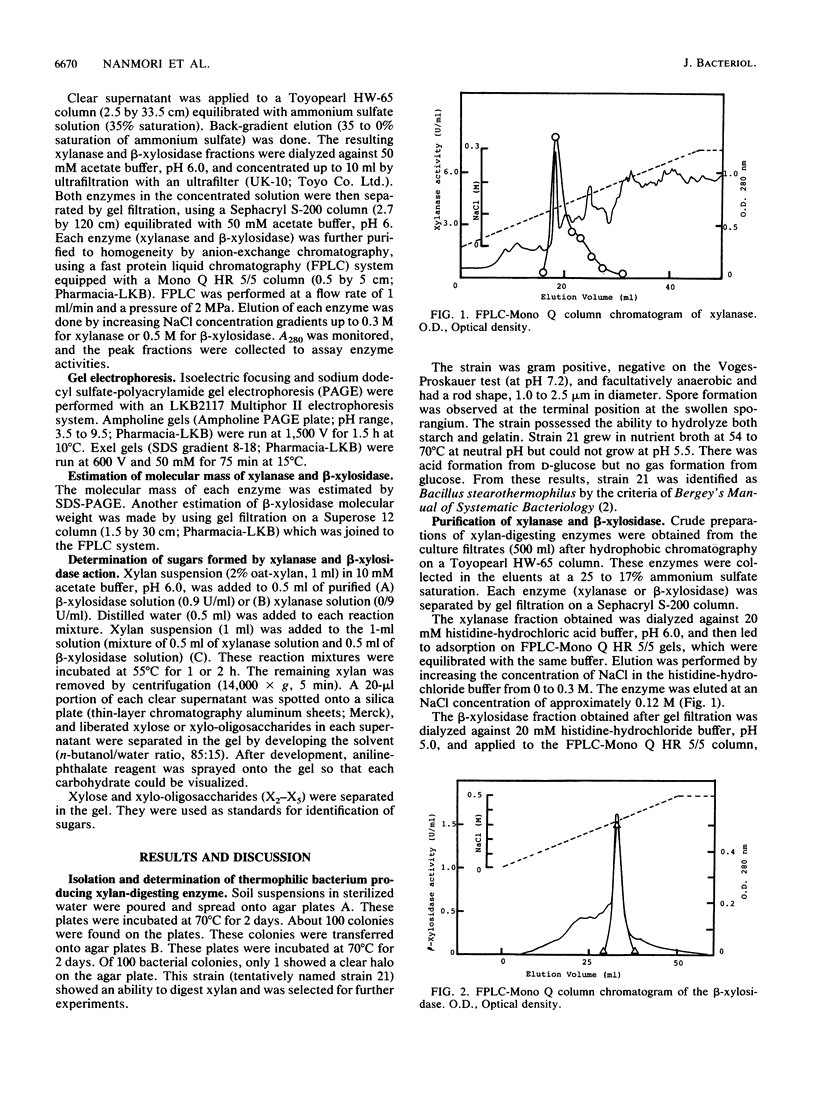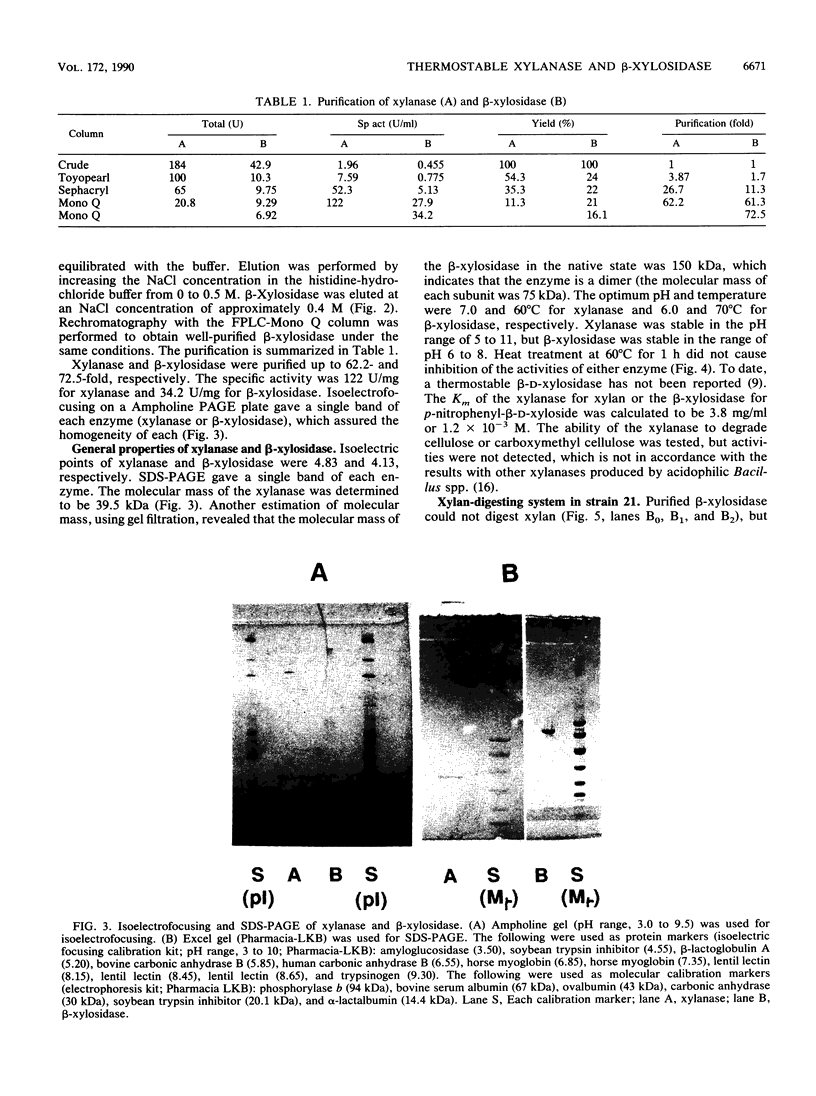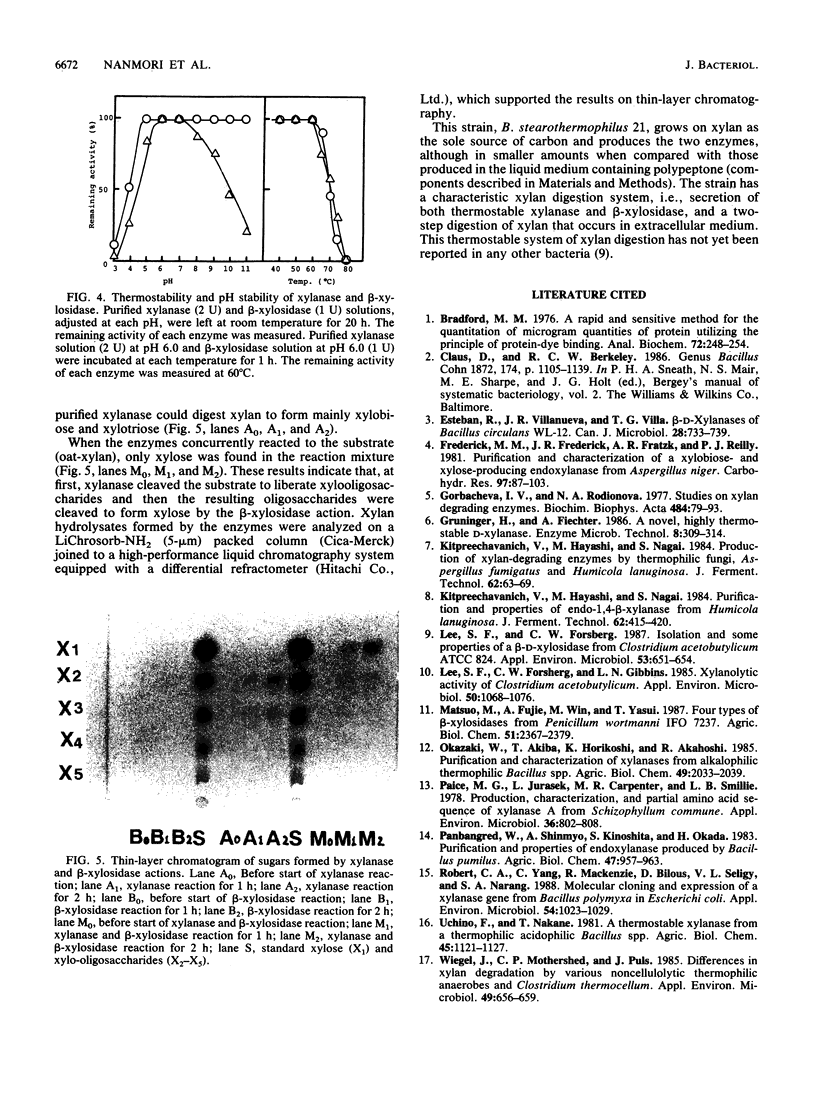Abstract
We isolated a thermophilic bacterium that produces both xylanase and beta-xylosidase. Based on taxonomical research, this bacterium was identified as Bacillus stearothermophilus. Each extracellular enzyme was separated by hydrophobic chromatography by using a Toyopearl HW-65 column, followed by gel filtration with a Sephacryl S-200 column. Each enzyme in the culture was further purified to homogeneity (62-fold for xylanase and 72-fold for beta-xylosidase) by using a fast protein liquid chromatography system with a Mono Q HR 5/5 column. The optimum temperatures were 60 degrees C for xylanase and 70 degrees C for beta-xylosidase. The isoelectric points and molecular masses were 5.1 and 39.5 kDa for xylanase and 4.2 and 150 kDa for beta-xylosidase, respectively. Heat treatment at 60 degrees C for 1 h did not cause inhibition of the activities of these enzymes. The action of the two enzymes on xylan gave only xylose.
Full text
PDF



Images in this article
Selected References
These references are in PubMed. This may not be the complete list of references from this article.
- Bradford M. M. A rapid and sensitive method for the quantitation of microgram quantities of protein utilizing the principle of protein-dye binding. Anal Biochem. 1976 May 7;72:248–254. doi: 10.1016/0003-2697(76)90527-3. [DOI] [PubMed] [Google Scholar]
- Gorbacheva I. V., Rodionova N. A. Studies on xylan degrading enzymes. I. Purification and characterization of endo-1,4-beta-xylanase from Aspergillus niger str. 14. Biochim Biophys Acta. 1977 Sep 15;484(1):79–93. doi: 10.1016/0005-2744(77)90114-0. [DOI] [PubMed] [Google Scholar]
- Lee S. F., Forsberg C. W., Gibbins L. N. Xylanolytic Activity of Clostridium acetobutylicum. Appl Environ Microbiol. 1985 Oct;50(4):1068–1076. doi: 10.1128/aem.50.4.1068-1076.1985. [DOI] [PMC free article] [PubMed] [Google Scholar]
- Lee S. F., Forsberg C. W. Isolation and Some Properties of a beta-d-Xylosidase from Clostridium acetobutylicum ATCC 824. Appl Environ Microbiol. 1987 Apr;53(4):651–654. doi: 10.1128/aem.53.4.651-654.1987. [DOI] [PMC free article] [PubMed] [Google Scholar]
- Paice M. G., Jurasek L., Carpenter M. R., Smillie L. B. Production, characterization, and partial amino acid sequence of xylanase A from Schizophyllum commune. Appl Environ Microbiol. 1978 Dec;36(6):802–808. doi: 10.1128/aem.36.6.802-808.1978. [DOI] [PMC free article] [PubMed] [Google Scholar]
- Wiegel J., Mothershed C. P., Puls J. Differences in Xylan Degradation by Various Noncellulolytic Thermophilic Anaerobes and Clostridium thermocellum. Appl Environ Microbiol. 1985 Mar;49(3):656–659. doi: 10.1128/aem.49.3.656-659.1985. [DOI] [PMC free article] [PubMed] [Google Scholar]
- Yang R. C., Mackenzie C. R., Bilous D., Seligy V. L., Narang S. A. Molecular Cloning and Expression of a Xylanase Gene from Bacillus polymyxa in Escherichia coli. Appl Environ Microbiol. 1988 Apr;54(4):1023–1029. doi: 10.1128/aem.54.4.1023-1029.1988. [DOI] [PMC free article] [PubMed] [Google Scholar]




